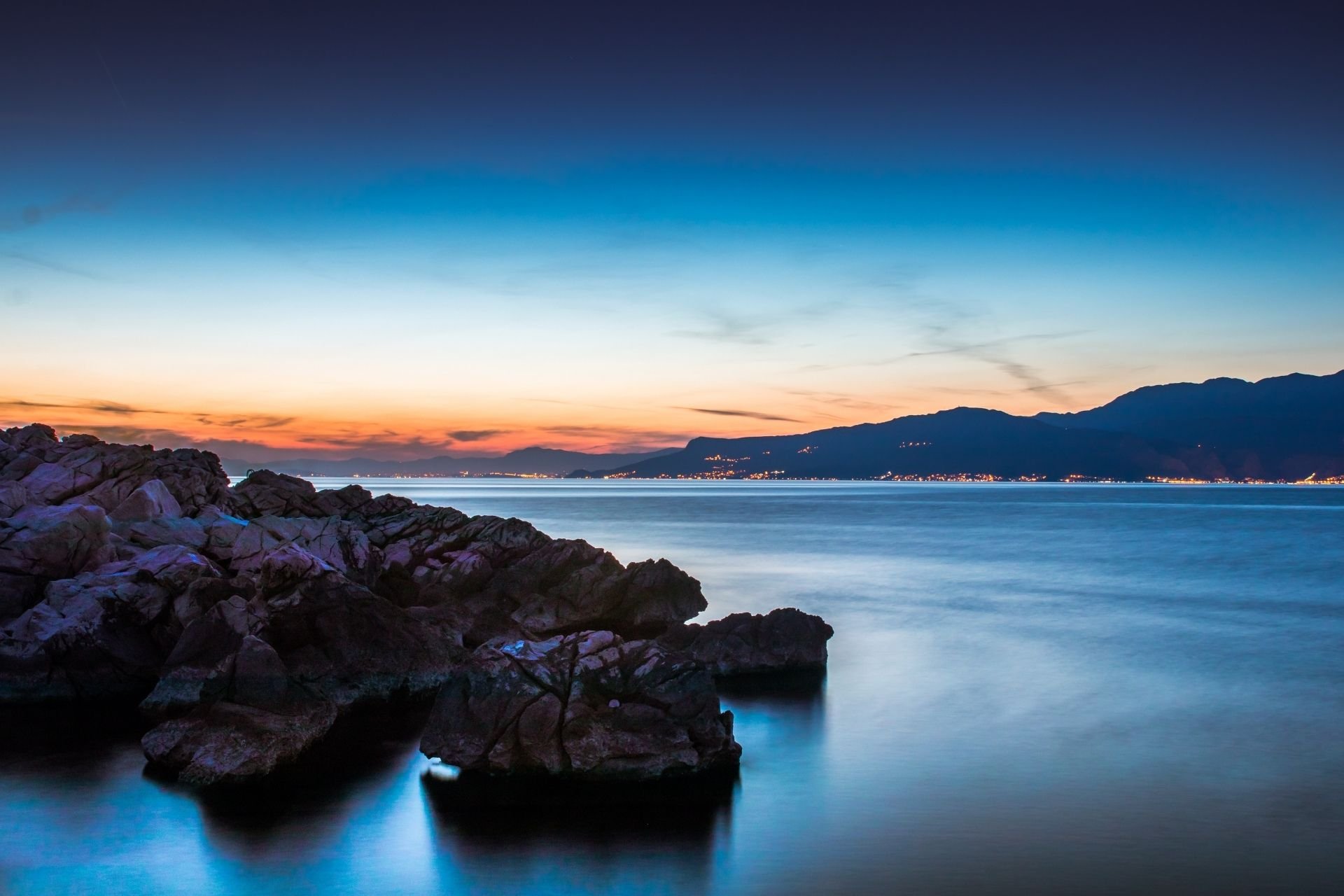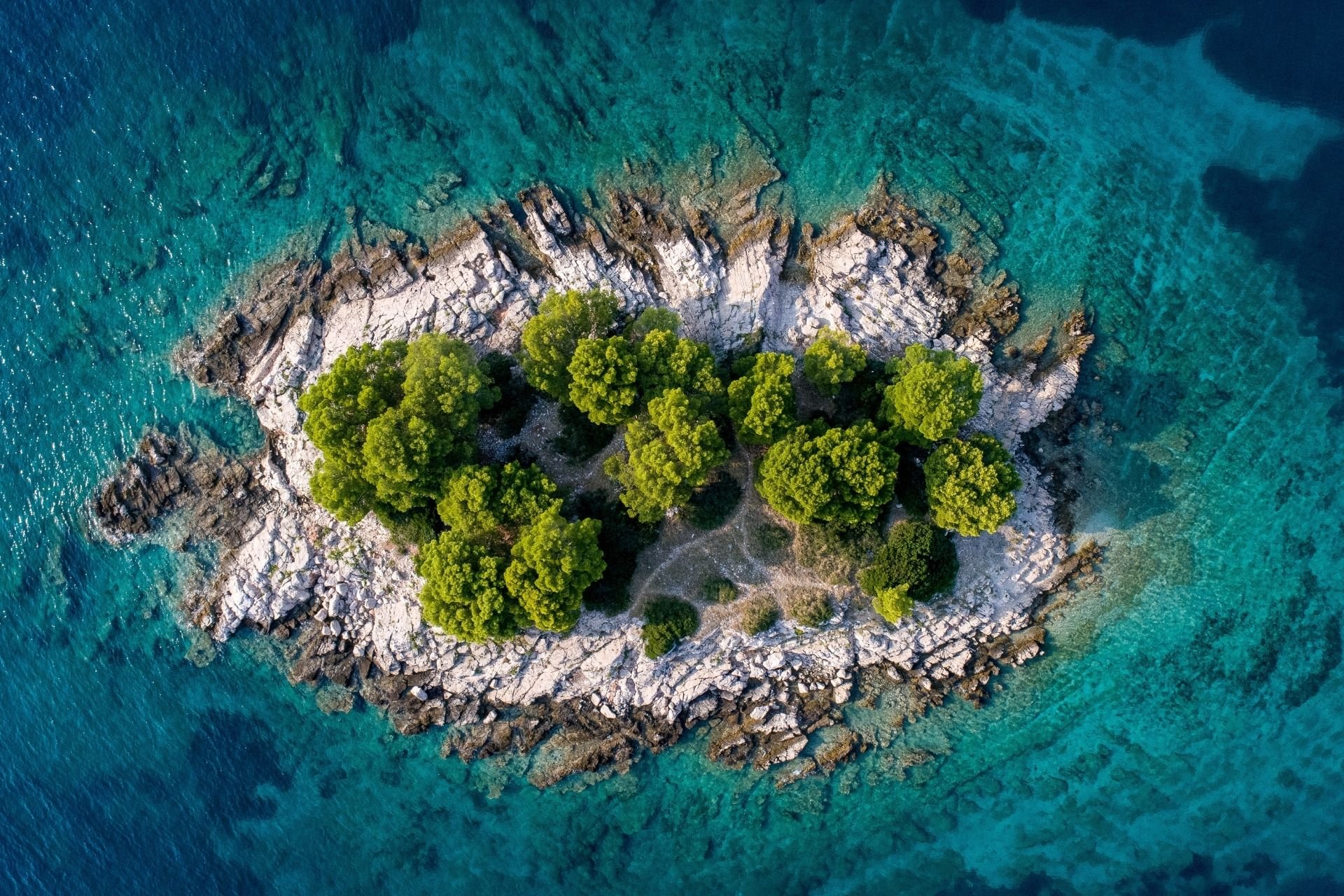Croatia
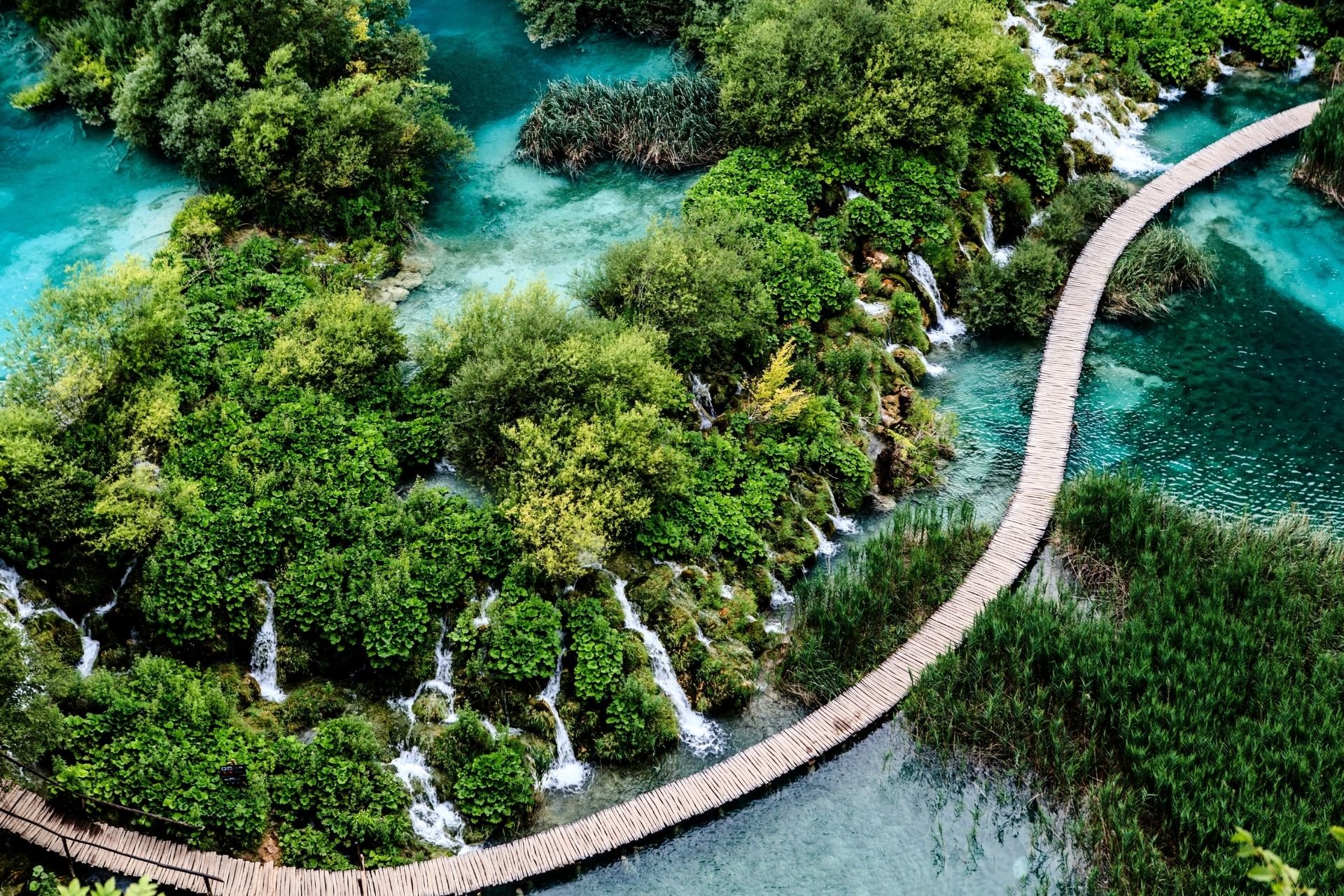
Sports and adventures
Croatia has become one of the most sought-after destinations for outdoor sports in Europe, both for lovers of water sports and other outdoor activities.
Here we present the sports activities that we believe are a must try.
On the Sport page you will find the technical data sheets of the sporting activities and if you want to receive personalized itineraries that include these activities, contact us. We will prepare an on-site travel program that reflects your wishes and physical preparation.
Canyoning: Croatia has numerous canyoning spots with many caves, waterfalls and streams of crystal clear water. Split, Omis or Rijeka are some of the places that will delight you if you are looking for an intense and thrilling activity.
Skydiving: Split is the mecca for skydive junkies. Note that Zagreb and Hvar are also key destinations for jumping from a plane on a 45-second tandem freefall on Croatia’s most popular peninsula.
Rafting: enjoy an epic rafting trip on the Cetina River near Split with a 10 km descent where you will enjoy several stops for swimming, jumping from the rocks into the deep river, spotting wild animals or showering under a waterfall. As a bonus, you will have the opportunity to explore a cave with fresh spring water, stalactites and stalagmites entering through a waterfall.
Diving: Croatia is renowned as one of the best destinations in the world for underwater exploration, thanks to the crystal clear waters of the Adriatic Sea and its rich and varied fauna and flora. Divers can enjoy the colorful vegetation in the Kornati National Park and its archipelago of 89 islands, but also in Pula and Split.
Mountain biking: a unique MTB excursion is the one where you’ll discover the ruins of Croatia’s oldest cities of Stari Grad. You’ll reconnect with nature but will also feel like a trip back in time.
Rock climbing: about 60% of Croatia’s surface is mountainous, making it one of the most interesting places in Europe to climb for all technical levels and where you can find different ways. For example, you can climb up to 30 meters and enjoy the magnificent view of the city of Omiš, the Adriatic Sea and the canyon of Cetina.
Quad: you can take short quad excursions between Sinj and Split, but the real adventure is a quad biking trips that last from 2 to 5 days and take you to discover the country from the coast to the hinterland.
Hiking&Trekking: thanks to its mountains, Croatia offers several routes for a few hours up to a few days trekking and hiking.
Wind-surfing: in the Omiš area, wind-surfing is one of the main activities you can have fun with this summer.
Zipline: there are 2 of them, one in the mountainous area near Split, the other near Omiš, on the Cetina river.
Flyboard / Hoverboard: on the island of Lesina (Hvar) you can try to balance on the water with this super-fun tool.
Jet skis: on the Split coast you will find nothing more fun than water sports.
Parasailing: you can try it in Trogir.
Skywalk: in Croatia you can also experience the thrill of walking on the roof of the Poljud stadium and swinging on a swing 70 meters above the football pitch.
Paragliding: the sensation of flying over the Plitvice lakes, with that crazy panorama, is unique.
Skiing: yes, in Croatia you can even ski near Rijeka on Mount Platak.
Caving: Croatia lives on a world of wells, sinkholes and rocks that makes it one of the countries with the highest karst density in this area. The Croatian karst world is known all over the world for the depth of its wells, present in particular on the reliefs of the Bebie Alps (or Velèbiti mountains).
Bungee jumping: imagine overhanging rocky walls that, upside down, seem to emerge from the blue of the sea, while you immerse yourself in that image with a jump into the void from the Maslenica Bridge (Maslenički most) which, with its 56 meters, it’s the highest point from which to practice bungee jumping in Croatia. Then there is the Sibenik Bridge, about ten meters lower, whose flight takes a few fractions of a second less, but the emotion is equally unforgettable.

Visit Croatia by quad
Experiences
Here are some of the unique and exciting experiences you could live in this destination:
Visit the Plitvice National Park, a UNESCO World Heritage Site. It is a huge park characterized by lakes and waterfalls to visit along paths and wooden walkways. Alternatively, you can take the panoramic train or an electric ferry.
Visit fishing villages and stop in a tavern to taste fish or other typical specialties.
Stroll along the narrow streets of medieval villages and admire the suggestive architecture.
Visit the Krka Waterfalls National Park: it’s located in Northern Dalmatia and is one of the most beautiful parks in Croatia. It was born at the foot of the Dinara mountains, and inside it you can admire 7 waterfalls but also some stupendous travertine waterfalls.
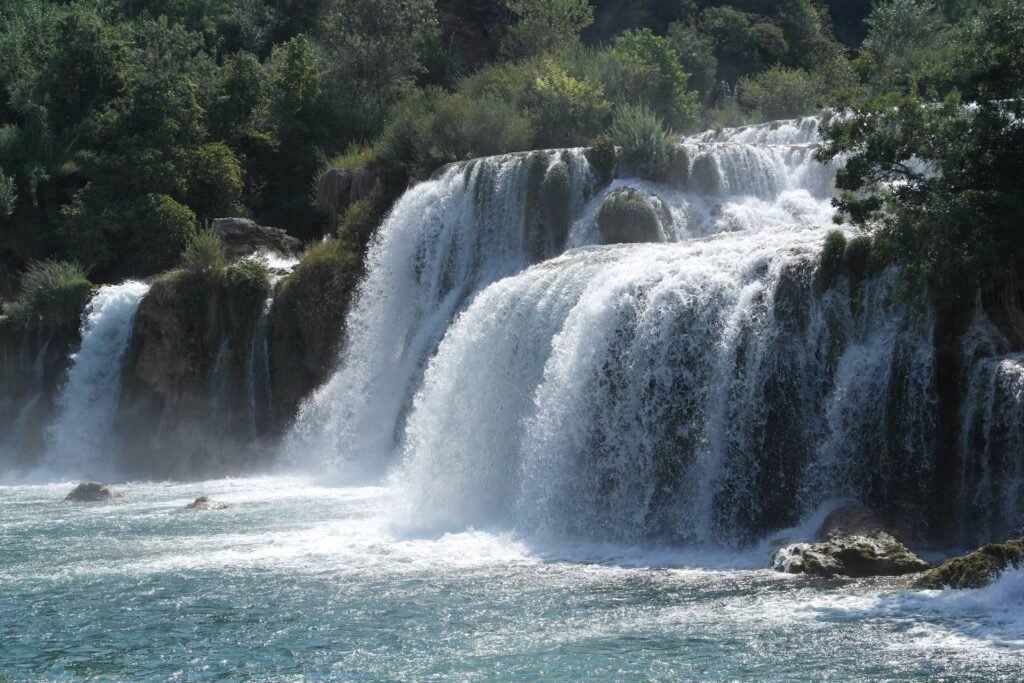
Visit Krka waterfalls
What to see
Croatia offers wonderful locations that are absolutely worth visiting. Here you have some:
Zagreb: is a city full of life and attractions. In the Upper Town, begin to familiarize with Croatian cuisine by visiting the Dolac Market, a colorful market with a view of the Cathedral. In the Lower Town, enjoy the sun at the outdoor tables of cafes and excellent pastry shops, or relax like the locals in the parks that form the so-called “green horseshoe”.
Istria: is a privileged destination for rural, sports and food and wine tourism. In this area there are also many villages of great beauty: from Umag to Pula, passing through Rovinj and Poreč, towns of Roman origin where you can get lost for a while among the cobblestones and alleys full of flowers, looking for the most evocative views. If you are looking for an experience outside the box, along the coasts of Istria there are 6 lighthouses where you can stay.
Zadar: a city that was able to reborn after the bombing suffered during the Second World War. In this city, cathedrals and Roman forums and contemporary works coexist, such as the Greeting to the Sun, an installation of glass and photovoltaic panels that absorbs the sun’s rays and then transform them into plays of light in the evening, and the Sea Organ, built so that the passage of water in the system of pipes produces a very special sound.
Trogir: this town is characterized by light-colored stone buildings and one of the best preserved historical centers in Croatia, all surrounded by the sea on each side. Here you can stroll through a labyrinth of Venetian-style streets.
Split: here buildings from all periods ended up incorporating the ancient Palace of the Roman Emperor Diocletian. Next to the columns of the ancient peristyle you will now find the tables of the many trendy cafes, and the surrounding walls have become the walls of elegant buildings and hotels.
Dubrovnik: considered among the most beautiful cities in Europe and nicknamed the “Pearl of the Adriatic”. Do not miss the walk on the ancient walls, almost 2 kilometers long, which offer breathtaking views of the entire surrounding landscape, reaching a height of 25 meters in some points.
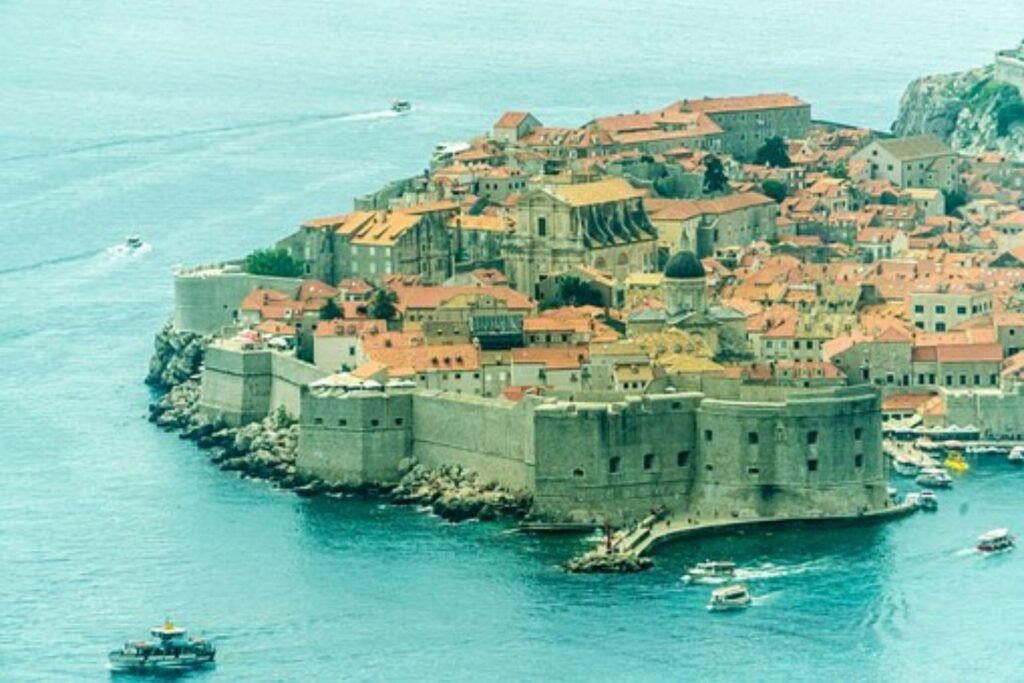
Dubrovnik
Food and Wine
Croatia has a very wide gastronomic variety, able to offer tasting moments of a certain depth.
Each Region has its own characteristics and its typical dishes, derived from Hungarian, Viennese and Turkish influences that are found in the meat and vegetable dishes and in the pastry specialties of the continental regions, up to the Mediterranean flavors, typically Greek, Roman and Illyrian, of the dishes of sea of coastal regions …
Olive oil is another fundamental ingredient of Croatian cuisine and one of the most important agri-food products in the country. It is produced in Istria, Kvarner and in Dalmatia.
Croatia is also important for its numerous wine-growing areas, such as Motovun (Motovun) in Istria, Kutjevo in Slavonia or Međimurje in central Croatia.
Here we give you some suggestions of typical dishes to taste during your trip to Croatia:
Pašticada: it is a meat dish that is prepared patiently and for a long time, in several stages. The base is beef or veal, stewed in a sauce, all washed down with wine and prosecco, with the addition of dried fruit, usually plums, and numerous spices, such as cloves, nutmeg, bay leaf and pepper. It is usually accompanied by gnocchi, sprinkled with grated pecorino cheese.
Fiš-paprikaš is the (river) fish version of paprikaš. It is a rich fish stew from Slavonia and Baranja.
Traditionally, the fiš-paprikaš is prepared in a copper cauldron in which various river fish such as catfish, carp or pike, cut into pieces, are immersed. Then the onion, spices and condiments are added which give the fiš-paprikaš its characteristic color and spiciness, the tomato sauce, abundant white wine, gametes and fish roe. It is accompanied with a side dish of homemade pappardelle, but it is also excellent served with slices of homemade bread.
Štrukli: are a specialty of the traditional cuisine of Hrvatsko zagorje. They are essentially offered in two versions: boiled or baked. In both versions, a mixture of flour, salt, egg, water, a spoonful of vinegar and one of oil is used and the mixture is filled with cow’s milk cheese, sour cream and a little sugar in the sweet version.
Boiled štrukli can be seasoned with melted lard and breadcrumbs (or served in a very rich soup), those cooked in the oven, before being baked, should be sprinkled with sour cream.
Depending on the version, they are excellent as an appetizer, but also excellent made in soup, baked as a substantial and tasty second course, or as a snack or delicious dessert.
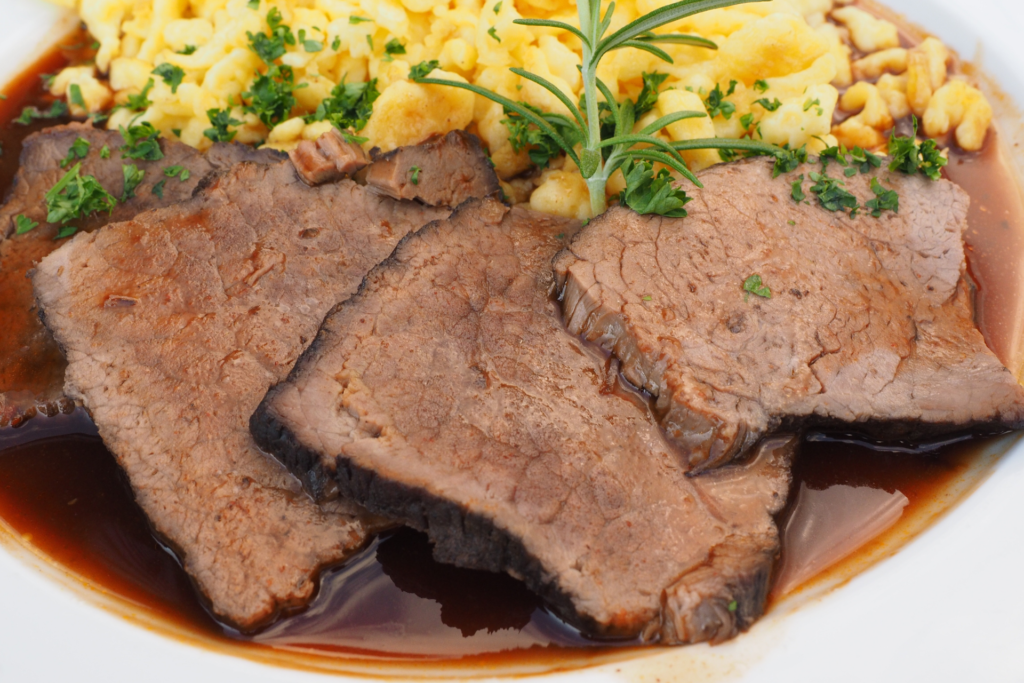
Meat is absolutely worth it
When to go
What is the best time to visit Croatia?
There are three different climatic zones in Croatia.
The Mediterranean climate prevails on the coast. Summers are dry and hot, winters mild and wet.
Temperatures drop slightly if you go inland, where the moderate continental climate predominates.
At altitudes above 1,200 meters, fresh mountain air prevails while, in the summer months, the temperature fluctuates around 13 ° C.
In general, the best time to visit Croatia is between May and September, with a preference for September if you go to Croatia for the sea, when the water is warm, the days are still long and the temperatures are pleasant and not muggy.
What to pack
Of course, what to pack for a trip to Croatia depends on what activities you will do and, above all, on the period when you go there.
Below we give you just a few indications on what absolutely must not be missing.
We generally recommend light, practical, sporty and informal clothing (no hotel requires elegant clothing).
In the summer, a light sweater is more than enough.
Closed, low, comfortable shoes with non-slip soles for visiting parks
Long (but light) trousers and a shrug or something to cover you to visit the many churches that sprinkle all the towns.
Hat for shelter from the sun.
Don’t forget your sunscreen!
For the sea, bring a yoga mat or an inflatable mattress because the beaches are pebbly and not sandy. Instead of flip-flops I highly recommend rock shoes.
The hairdryer because it is possible that you will not find it in the room.
Information
Continent: Europe
Capital: Zagreb
Language: Croatian, Serbian. Italian is widespread on the coast in Istria, in Kvarner and in Dalmatia. In the main coastal cities of Istria there is bilingualism (Italian and Croatian). In the capital and in the coastal tourist centers, English is widespread and, in part, German.
Currency: HRK – Croatian Kuna. One kuna equals 100 lipos. Foreign currencies can be exchanged at any bank, money changer, post office and most travel agencies, hotels and campsites. In almost all public establishments and ATMs it is also possible to use credit cards such as Visa, MasterCard, American Express, Diners, etc.
Power sockets and voltage: 220 Volt, 50 Hz. Electric Socket Type C and Type F.
For up-to-date and detailed information visit www.viaggiaresicuri.it
Some tips
Croatia is a mecca for those who love meat, so go out and eat and taste.
